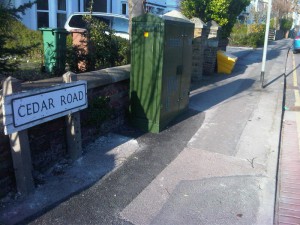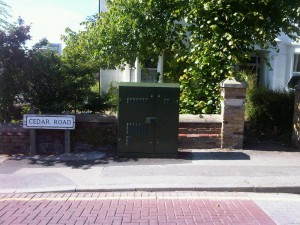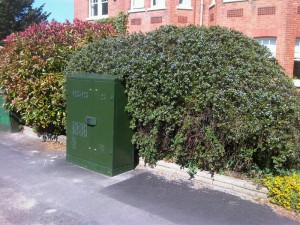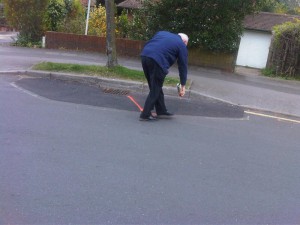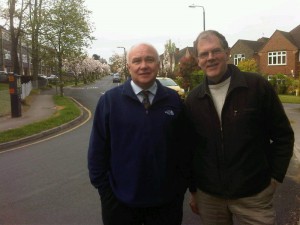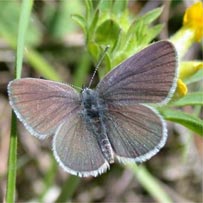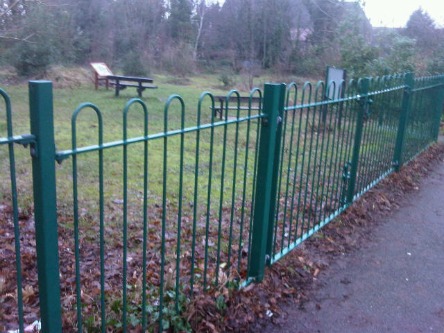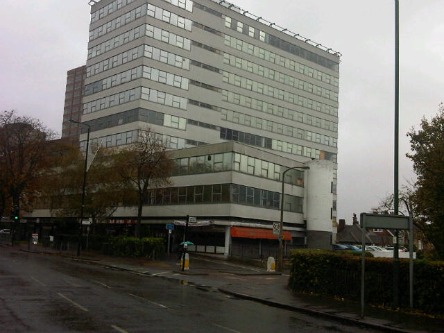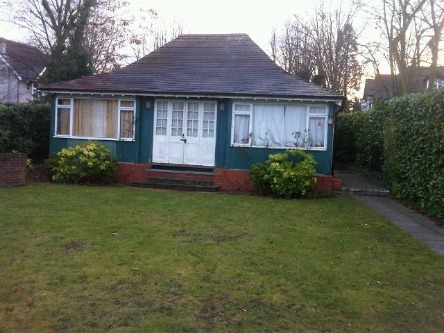
Councillor Clifton nominated the Edwardian tennis pavilion that sits on the triangle of land where The Ridgway joins Mayfield Road in our Ward for inclusion on the Sutton Local List. At the Sutton Council meeting on 9 May 2011 the pavilion was included in the list of buildings to be added to the Sutton Local List.
This is the only building in Sutton South Ward to be included on the Local List, though the Registry Office in Worcester Road is on the national list of Listed Buildings.
The building is the only one of the buildings put forward as additions during the consultation process to make it to the final list. This was attributed to the fact that Councillor Clifton had put forward a carefully researched case, including adequate evidence.
The Sutton Local List is a list of buildings thought to be of importance to the comunity, though not of sufficient merit to be “Listed Buildings” for inclusion on the national list. The list thus includes local buildings of significance to the local community. Sutton Council has been consulting on additions to the Local List and, at a presentation to the Sutton South, Cheam and Belmont Local Committee on 27 January, it became evident that not one single building in Sutton South Ward was under consideration for inclusion on the local list. This led to Councillor Clifton proposing inclusion of the pavilion.
The inclusion of the pavilion on the list may be helpful in the preservation of the character of this area as an Area of Special Local Character (ASLC), and thus resisting any inappropriate development in the area, such as demolition of houses and erection of blocks of flats, which has been the trend in adjacent areas. At a Planning Appeal attended by Councillor Clifton last year he had to explain to the Inspector the importance of local people of the ASLC and why it should be taken into account in the planning decision.
Councillor Clifton said:
“I am delighted with this outcome. One of our key objectives, as local Councillors, is to preserve the character of the Area of Special Local Character at the east end of Sutton South Ward. We must resist the trend to knock down houses and build small blocks of flats, which has led to a shortage of family homes in many parts of Sutton South Ward, and half the children living in accommodatin with no access to a garden. This recognition of the importance of buildings such as the Edwardian tennis club to the special character of the area may be helpful to us in pursuing that objective.”
In proposing the pavilion, Councillor Clifton wrote:
“It is an Edwardian tennis pavilion, built in 1908 by the local architect Percy Vere Windebank, on the triangle of land at the junction of Mayfield Road and The Ridgway, in South Sutton Ward. It is a relatively unaltered example of a small, Edwardian tennis club pavilion, though the windows have been altered in an unsympathetic manner.
The history of the building is interesting. Up to 1906 this area was lavender fields. Between 1906 and 1914 Windebank laid out the Highfields Estate, building what is now The Ridgway, Mayfield Road , Chalgrove Road and Hillcroome Road . The concept was an estate of large, expensive houses with large gardens, grouped around or close to a triangle of land on which there would be a lawn tennis and croquet club, for the benefit of the residents. In 2008 the Highfields Residents’ Association published a history of the estate, “Highfields 100”, to mark the centenary. A copy of this history, to which Councillor Clifton is listed as a contributor, is obtainable from Mr Keith Percy at 63 The Ridgway, SM2 5JX. The houses are of some architectural merit, as indicated in the history.
We believe the pavilion was built by 1908, as the Highfield Lawns tennis club was in existence by that year. On 22 August 1908 an advertisement for the first of the newly-built houses on the estate was published in the Surrey County Herald newspapers, and mentioned the private tennis club on the estate. Highfield Lawns Ltd. was established as a company by 1913 with the sole objective of owning the land in order to allow the tennis and croquet club to operate. Those who bought one of Windebank’s houses could buy shares in Highfield Lawns. The Articles of Association of the company provide, to this day, that if you own a share in the company you can only vote on its affairs if you also own property in the Highfields Estate.
Over the years the large gardens have been sold off for infill housing, mostly of a good quality. The area is designated an Area of Special Local Character (ASLC) and the Edwardian tennis pavilion is central to the character of the area. Were it to be proposed to demolish and re-build the pavilion any replacement would need to be a building of a similar character (not a modern building or a concrete slab) due to the ASLC designation. If the Local List is a list of buildings of some local significance, the pavilion should be on the list. This is based on criteria 3, a building of significant local interest.”
Councillors Clifton and Honour would welcome information on any famous people who have lived in Sutton South Ward, for consideration as to whether there should be a plaque erected on the property where they lived.
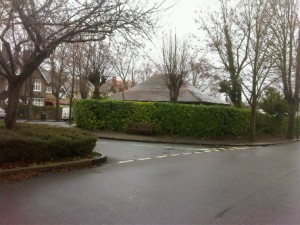
This is a picture of the clubhouse taken from the triangle in The Ridgway. A photograph taken in 1913 shows an almost identical scene.



